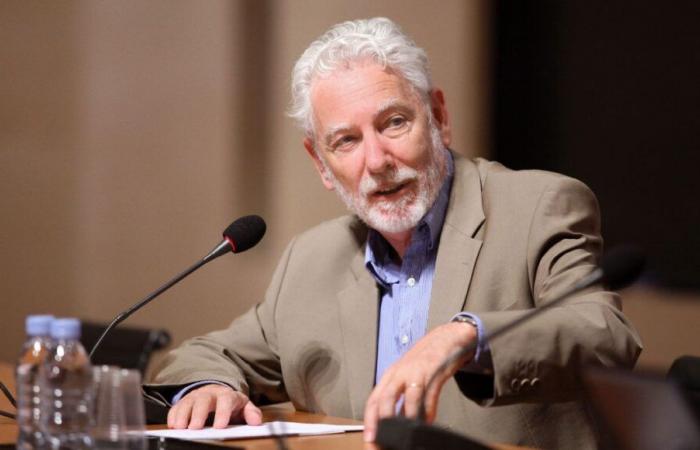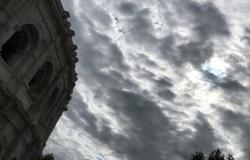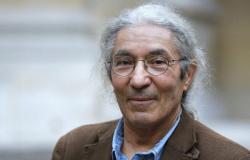Although the anthropologist Philippe Descola is now retired, he has never stopped learning, every day. He doesn’t even imagine “no other life than learning every day“, he said on Eva Bester’s microphone. The vocation for anthropology came to him while reading Sad Tropics by Claude Lévi-Strauss, who would later advise him to “let himself be carried away by the terrain”. This is advice duly applied throughout his life, first among the Achuar Indian people to whom he arrived at the age of 26, alongside the ethnologist, and also his companion, Anne-Christine Taylor. First founding steps, diving “into real life”, he would say later. A life made of oneiromancy, the end of capitalism, insects and plants that talk…
His thoughts and work are found in the Cahier Descola de l’Herne, directed by Grégory Delaplace and Salvatore D’Onofrio, released on September 25. Descola will be signing on November 6 at the Bookstore Company in Paris, and on November 29 at the Mollat bookstore in Bordeaux.
Inventing alternative forms of habitation of the world
Anthropologist and former professor at EHESS and the Collège de France, where he held the chair of natural anthropology for nearly 20 years, Philippe Descola defended his thesis under the direction of Claude Lévi-Strauss before leaving two years in the Amazon, between Peru and Ecuador for the CNRS, to study the relationships with the environment of the Jivaros Achuar Amerindians. He then discovers that nature does not exist. Author of the reference work Beyond Nature and Culture. This major figure in ecological thought, having defined an ontological structuralism, also wrote the forms of the visible qualified by the world of events which revolutionizes the history and theory of art, the geography of our world and the idea that we form relationships between men, gods, animals and plants.
Faced with the scale of the environmental crisis, the anthropologist invites us to invent alternative forms of habitation of the world and organization between humans and non-humans. A Herne’s notebookdirected by Gregory Delaplace and Salvatore D’Onofrio, has just been dedicated to him. Inside we find unpublished works by Philippe Descola, extracts from his correspondence with Lévi-Strauss and texts by Bruno Latour, Georges Didi-Huberman, Pierre Michon and Jacques Rancière.
The big workshop Listen later
Lecture listen 1h 44min
“The radiant dawn of a world where everything is relationships”
In the Herne’s notebook dedicated to him, we can read the sermon that Philipe Descola wrote for the new millennium in 2000. In it, he hoped for the radiant dawn of a world where everything is relationship: “I was with friends and in particular Bruno Latour in a castle, and instead of celebrating like everyone else the third millennium to come, we decided to celebrate the second millennium by trying to imagine it differently from what it was and I was entrusted with the mission of giving a sermon which I did partly in Latin. The idea was to make a prediction from the Virgin about what would happen in this second millennium. There was the beginning of what I called naturalism and basically modernity; this is what happened from the 17th century onwards, and which drastically separated humans from non-humans and nature, as a field of investigation and a resource to be exploited. And then on the other hand, humans and their own characteristics. I imagined that following the conquest of America, the Native Americans would seize the weapons that the Europeans had brought and in turn invade the Old World and introduce new forms of thought that would put an end to what I I called naturalism, and perhaps we are at this moment approaching the bottom of these shakings. »
The world is made of differences
Philippe Descola still gives a lot of conferences and he considers it a duty to make the results of his work known to the public, but concepts like ontological structuralism can sometimes frighten the general public: “In my classes, the idea of structuralism is based on the idea that the world is made of differences and that if we want to understand something in the world, it will not be by trying to establish similarities between these things which differ, but on the contrary to understand how these differences differ from each other. This is what Claude Lévi-Strauss transmitted to us as a model of thought that he himself had acquired from linguistics, structural phonology and ontology. Why leave the idea that humans create worlds, that they select elements from their surroundings that are more or less significant and that will build meaningful worlds? They will build furniture and will build during their socialization, their education and their growth, a particular furniture composed of objects which will differ depending not only on the physical and social environments, but also on the choices they make to lend there. This is ontology, this is the furniture of the world. The furniture, for example in the Amazon, is not ours at all because it pays attention to something other than what we pay attention to and vice versa. The world is different and each of us builds different worlds. It is not simply that each of us has a different vision of a uniform world, but that the world is composed of a multiplicity of different worlds. »
Boomerang Listen later
Lecture listen 33 min
Organize the structure of the world
In Beyond nature and culture, we find one of Philippe Descola’s main ideas which is that we can organize the construction of a world based on four major models: naturalist, animist, totemic and analog. “These are models that can coexist. Historically, there are transition phases. There is one that we know well, it is that of the transition from analogy which dominated the Middle Ages until the Renaissance, including naturalism which was established in texts in the 17th century. From the 15th century onwards, we began to be naturalistic, that is to say that the picture artists both in the northern countries and in northern Italy took to heart to show things that had not been previously not shown before, in particular the description of nature and the painting of the soul, through the art of portraiture like those of Robert Campin which in no way hide the imperfections, it is somewhere the beginning of individualism. »
Observe possible alternative solutions to the future of Man
Through his work, Philippe Descola is aware of the universal damage caused to our world by industrial capitalism, but the plurality of human organizations that the ethnologist has in mind allows him to imagine that solutions and alternative paths are possible. : “I see them, for example, in the alternative territories which have developed in the ZADs, for example, and in the ecological struggles which have developed in Europe against untimely, costly and useless development projects, and which have resulted in what people come together, and who were not from a rural culture but who identified deeply with the environment they defended to the point of wanting to live there together and refusing all the imperatives of capitalism, is that is to say by sharing the work, that of market gardening, livestock breeding, wheat cultivation, by inventing the forms of communities that I knew from having shared the life of Amerindians in the Amazon or from having read, like any anthropologist, a lot on indigenous populations around the world. I find it admirable to see these structures reproduce and recreate themselves in the face of the catastrophic ecological situation we are heading towards. »
To find out more, listen to the show…
Wind in the synapses Listen later
Lecture listen 53 min
Excerpts broadcast:
- The anthropologist Claude Lévi-Strauss in the show “Apostrophes” in 1988
- The voice of Léon Trotsky in French broadcast in a broadcast by Yves Mourousi in 1979
- The voice of Henri Michaux in the introduction to the documentary film Images of a visionary world (1963) directed with Eric Duvivier
Guest’s musical choice:
Philippe Descola makes us listen to the Cuban song Santa Barbaraperformed by the duo Celina y Reutilio, “wonderful hybridization between a Christian tradition and Santeria”. Our guest mischievously adds: “this music, you have to be dead not to dance to it!”
On the roads of music Listen later
Lecture listen 4 min
Guest discovery:
Philippe Descola draws our attention to a painting by the Flemish painter Robert Campin exhibited at the Dijon museum, Nativity (1420-1425). According to our guest, this painting shows the transition in the arts from “analogical” thinking (which establishes correspondences between beings) to “naturalist” thinking (which singles out humans in relation to other beings).
My own work Listen later
Lecture listen 4 min
Musical programming:
Malik Djoudi – Come on, let’s take the time
Sharon van Etten – Afterlife






